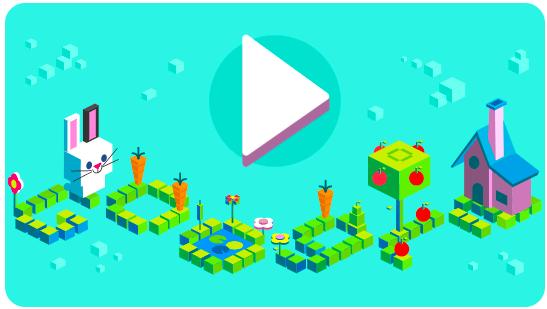編程一個網(wǎng)頁游戲,有什么游戲可以一邊玩?
你好,你問的這個問題對于本人來說,覺得我的世界比較好。
我的世界是一款手機(jī)、電腦都可以玩的沙盒游戲,在這個游戲里,你可以盡情地建造任何東西。
如果你想學(xué)編程,可以體驗(yàn)一下這個游戲的創(chuàng)造模式,在創(chuàng)造模式里,你可以通過/give @s command_block的指令來獲得命令方塊,通過這種方塊來改變游戲的模式、天氣、時間等,還可以殺死或復(fù)活某一種生物等。其它還有很多玩法,主要還是靠自己去慢慢硺磨了。打字不累,求置頂。

用編程貓自己編寫游戲時?
有一個積木模塊可以用于切換場景,“切換到場景XX”
用python可以編寫一款游戲模擬器么?
python 項(xiàng)目:DIY 街機(jī)游戲
這個練習(xí)是一個小游戲程序,如果要是給它起個名字的話,應(yīng)該叫:快躲,香蕉。 主要的游戲內(nèi)容就是,游戲開始會從屏幕上方不斷隨便的掉一些鐵塊,在屏幕下 方有一個小香蕉是受你控制的,你需要不斷的左右移動來躲避鐵塊。在你躲避完 一定數(shù)量的鐵塊之后,就會進(jìn)入下一關(guān)。下一關(guān)依然是讓你躲鐵塊,不過鐵塊下 降的速度就快了很多。在游戲中你可以按下任意鍵暫停,再次按則繼續(xù),按下 ESC 鍵退出。這就是全部的功能了,下面我們來看游戲的實(shí)現(xiàn)。
首先對所有代碼分類:
1、整體上代碼有一個配置模塊,來對游戲的速度、屏幕 的寬度、香蕉移動速度、字體大小、各個物體的圖片等進(jìn)行配置。
2、然后是有 一個元素模塊,即游戲中的兩個元素落下來的鐵塊以及被砸的香蕉,其中還要包 含他們具有的行為。
3、然后還有游戲中的各種狀態(tài)模塊,狀態(tài)模塊中的類繼承 關(guān)系稍微多一些,處于家譜最上方的就是 state 類,由它來衍生其他的所有狀態(tài), 它的直接子類是 Level 和 Pause,其中 Pause 有衍生出子類 Info、levelCleared、 GameOver、StartUp。
4、最后就是游戲的主模塊,用來讓其他模塊協(xié)調(diào)工作 的。
然后再來看一個整體圖:
有了上面整體的認(rèn)識,下面就要細(xì)揪一下了。我自己看代碼的方法是這樣的,首先整體分析,然后在從程序的入口點(diǎn)開始分析。我估計(jì)大多數(shù)人也是這么做的。
首先是 squish.py 文件中的 game 類:
class Game:
def init (self,*args):
path = os.path.abspath(args[0])
dir = os.path.split(path)[0]
os.chdir(dir)
self.state = None
self.nextState = StartUp()
def run(self):
pygame.init()
flag = 0
if config.full_screen:
flag = FULLSCREEN
screen_size = config.screen_size
screen = pygame.display.set_mode(screen_size,flag)
pygame.display.set_caption('Fruit Self Defense')
pygame.mouse.set_visible(False)
while True:
if self.state != self.nextState:
self.state = self.nextState
self.state.firstDisplay(screen)
for event in pygame.event.get():
self.state.handle(event)
self.state.update(self)
self.state.display(screen)
if name == ' main ':
game = Game(*sys.argv)
game.run()
忽略掉 init 中的設(shè)置代碼,在 run 中,該管理類首先調(diào)用 pygame 初始化并啟動游戲界面,然后在一個 whileTrue 的死循環(huán)中不斷的進(jìn)行狀態(tài)判斷,事件處理,然后根據(jù)事件更新當(dāng)前狀態(tài),并且繪制界面。
讓我們把焦點(diǎn)放在那個死循環(huán)中,因?yàn)樗褪钦麄€程序的流程所在。 其中狀態(tài)和事件的關(guān)系就是,當(dāng)發(fā)生某一事件之后,狀態(tài)就會發(fā)生變化,比如點(diǎn)擊事件、過關(guān)事件、死亡事件。這些事件的來源分別是:用戶操作、系統(tǒng)判斷、系統(tǒng)判斷。要繼續(xù)深入分析就需要再拿一部分代碼出來。
依然是來自 squish.py 文件中剩余的所有代碼:
import os, sys, pygame
from pygame.locals import *
import objects, config
class State:
def handle(self,event):
if event.type == QUIT:
sys.exit()
if event.type == KEYDOWN and event.key == K_ESCAPE:
sys.exit()
def firstDisplay(self, screen):
screen.fill(config.background_color)
pygame.display.flip()
def display(self, screen):
pass
class Level(State):
def init (self,number=1):
self.number = number
self.remaining = config.weights_per_level
speed = config.drop_speed
speed += (self.number - 1) * config.speed_increase
self.weight = objects.Weight(speed)
self.banana = objects.Banana()
both = self.weight,self.banana
self.sprites = pygame.sprite.RenderUpdates(both)
def update(self, game):
self.sprites.update()
if self.banana.touches(self.weight):
game.nextState = GameOver()
elif self.weight.landed:
self.weight.reset()
self.remaining -= 1
if self.remaining == 0:
game.nextState = LevelCleared(self.number)
def display(self, screen):
screen.fill(config.background_color)
updates = self.sprites.draw(screen)
pygame.display.update(updates)
class Paused(State ):
finished = 0
image = None
text = ''
def handle(self, event):
State.handle(self, event)
if event.type in [MOUSEBUTTONDOWN,KEYDOWN]:
self.finished = 1
def update(self, game):
if self.finished:
game.nextState = self.nextState()
def firstDisplay(self, screen):
screen.fill(config.background_color)
font = pygame.font.Font(None, config.font_size)
lines = self.text.strip().splitlines()
height = len(lines) * font.get_linesize()
center,top = screen.get_rect().center
top -= height // 2
if self.image:
image = pygame.image.load(self.image).convert()
r = image.get_rect()
top += r.height // 2
r.midbottom = center, top -20
screen.blit(image, r)
antialias = 1
black = 0,0,0
for line in lines:
text = font.render(line.strip(),antialias,black)
r = text.get_rect()
r.midtop = center,top
screen.blit(text, r)
top += font.get_linesize()
pygame.display.flip()
class Info(Paused):
nextState = Level
text = '''
In this game you are a banana,
trying to survive a course in
self-defense against fruit,where the
participants will 'defend' themselves
against you with a 16 ton weight.'''
class StartUp(Paused):
nextState = Info
image = config.splash_image
text = '''
Welcome to Squish.
the game of Fruit Self-Defense'''
class LevelCleared(Paused):
def init (self, number):
self.number = number
self.text = '''Level %i cleared
Click to start next level''' % self.number
def nextState(self):
return Level(self.number + 1)
class GameOver(Paused):
nextState = Level
text = '''
Game Over
Click to Restart, Esc to Quit'''
其中用戶判斷部分就是 Paused 類中的 update 方法和 handle 方法,而系統(tǒng)判斷就是 Level 類中的 update 方法。還有一個要注意的地方就是 Level 類中update 方法中的第一行代碼:self.sprites.update(),這是讓鐵塊不斷下落的關(guān)鍵代碼。用戶判斷部分的代碼已經(jīng)有了,下面需要貼上系統(tǒng)判斷時用到的代碼.
objects.py 中的代碼:
import pygame,config,os
from random import randrange
class SquishSprite(pygame.sprite.Sprite):
def init (self, image):
pygame.sprite.Sprite. init (self)
self.image = pygame.image.load(image).convert()
self.rect = self.image.get_rect()
screen = pygame.display.get_surface()
shrink = -config.margin*2
self.area = screen.get_rect().inflate(shrink,shrink)
class Weight(SquishSprite):
def init (self, speed):
SquishSprite. init (self,config.weight_image)
self.speed = speed
self.reset()
def reset(self):
x = randrange(self.area.left, self.area.right)
self.rect.midbottom = x, 0
def update(self):
self.rect.top += self.speed
self.landed = self.rect.top >= self.area.bottom
class Banana(SquishSprite):
def init (self):
SquishSprite. init (self, config.banana_image)
self.rect.bottom = self.area.bottom
self.pad_top = config.banana_pad_top
self.pad_side = config.banana_pad_side
def update(self):
self.rect.centerx = pygame.mouse.get_pos()[0]
self.rect = self.rect.clamp(self.area)
def touches(self, other):
bounds = self.rect.inflate(-self.pad_side,-self.pad_top)
bounds.bottom = self.rect.bottom
return bounds.colliderect(other.rect)
在類 Banana 和 Weight 中的 update 和 touches 方法,用于進(jìn)行系統(tǒng)判斷。好了,到這主要的東西都分析完了,剩下的只需要稍看一下就能夠懂得了。 最后還有一個配置模塊的代碼 config.py:banana_image = 'banana.png'weight_image = 'weight.png'splash_image = 'weight.png'screen_size = 800,600background_color = 255,255,255margin = 30full_screen = 1font_size = 48drop_speed = 1banana_speed = 10speed_increase = 1weights_per_level = 10banana_pad_top = 40banana_pad_side = 20到此為止,《python 基礎(chǔ)教程》中的十個項(xiàng)目都已經(jīng)分析了一遍,下一步要做的就是做幾個實(shí)用軟件出來,然后把 python 再好好深入研究下。
應(yīng)曉勇要求,上幾個運(yùn)行圖:
以上就是關(guān)于編程一個網(wǎng)頁游戲和有什么游戲可以一邊玩的相關(guān)問題解答,希望對你有所幫助。